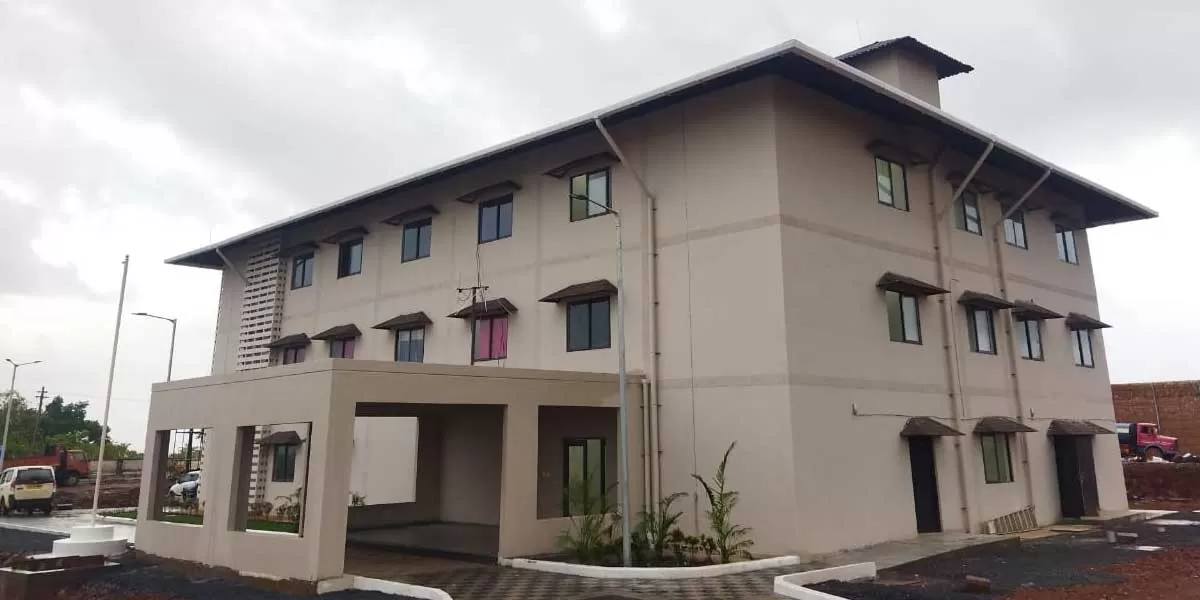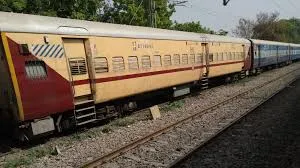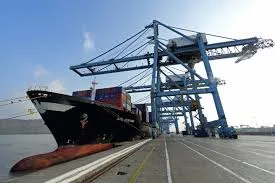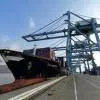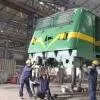Salmon Leap, which began in 2002 as an advisory company, later formed a subsidiary, HoMMission, to manufacture precast, prefinished volumetric buildings. It has delivered residential, commercial, institutional, office, ready-to-use buildings and amenities across India and entered the retail market by manufacturing individual villas. With the Government’s mission is to build 30 million houses, the company aims to standardise and manufacture these homes efficiently, says SJ Vijay, Founder and Chairman, Salmon Leap Ventures, in conversation with R SRINIVASAN. Excerpts:
Please take us through the company’s journey. Also, why the name ‘Salmon Leap’ and what inspired you to foray into 3-D monolithic modular
precast construction?
Salmon Leap is the parent and policy advisory company and HoMMission manufactures buildings as products. While seeking the fastest way to create stronger and better buildings, we went hunting for ‘modern methods of construction’. Construction is labour-intensive. Second, it tends to be fragmented and because it is manual and fragmented, you have the inevitable challenge of doing it step by step. So, manual, fragmented and sequential – these are the fundamental problems in construction. We talked about 2-D precast, which is manufacturing a room piece by piece, but it still remained fragmented and sequential. We wanted to jump to the next generation, where it is manufactured, integrated and bunched. At one go, we wanted to manufacture the whole room, along with all the service lines pre-embedded. That’s the reason for bringing in 3D, monolithic modular precast, which creates a building in a limited, finite number of modules and can be made at the site itself. This was the background and the search for modern methods of construction led to the adoption of this technology, which addresses these challenges to manufacture a building as a product.
As for the company’s name, just as the Salmon uses the churning river to go against the current, we intend to provide enabling microcosms to elevate businesses to new heights. Thus, ‘Salmon Leap’.
How many projects has the company undertaken to date?
HoMMission has completed various projects, including residential and institutional buildings, the police building inside Goa airport, an administrative office building in Navi Mumbai, the Air Force Officers’ Institute building in Bengaluru and a radar building for one of the airports. These are the different types of projects. We have entered the retail market as well where we are manufacturing individual villas for individuals who own a plot.
What factors, apart from speed, are driving the growth of 3-D monolithic modular precast construction regionally
and globally?
In addition to speed, 3D monolithic modular precast uses the least possible amount of labour or manpower. Globally, wherever the available time for construction was minimal in countries like Finland, where you have adverse weather most of the time, speed helps. If you come to countries where the manpower cost is extremely high, like Australia and Europe, the additional factor above the speed advantage is that 3D uses the least amount of manpower. Thus, fast-dwindling manpower and almost disappearing construction skills are key reasons.
Whether it is India’s largest construction companies like L&T or a small contractor, they are not able to find labour and skills. In the earlier days, where we had time, we could do a certain level of quality and finish it via plastering. Long wet work isn’t possible anymore because of labour shortage and consumer awareness in terms of expectation of quality, Now, there can be follow-on legal action if the quality is not OK. RERA imposes not only timely delivery but quality. Thus, the quality delivered by 3D monolithic modular precast is an additional benefit. All considered, it is faster in terms of speed, better in terms of quality and stronger in terms of the ability to withstand and honour warranties and guarantees. And all this is delivered without too much dependence on labour.
These are the key reasons why it is picking up traction. One factor can give us some leverage and some market attraction. But when there is a host of factors addressed or met, the technology gains increasing acceptance because of the basket of advantages it brings.
What were the constraints preventing its entry in the
Indian market?
Though early challenges such as limited availability of cranes and material handling equipment presented hurdles, advancements in technology and increased government support have facilitated rapid adoption of these modern construction methods. Equipment and accessories to make precast elements like precast grout couplers and precast wall shoes, which need to be connected, were being imported. But suddenly, the market changed in terms of size, market, scale and demand for quality. Multinationals that were earlier importing are now ‘making in India’ thanks to initiatives, such as Atmanirbhar Bharat. Equipment
has now become cost-effective
and available.
The most important is the Government’s push through the Ministry of Housing that set the mood. The approval process, quality delivery plus the ecosystem of precast accessories and material handling equipment all converged. That is why we are seeing more and more manufactured buildings as a product replacing conventional construction. It is no longer just construction technology adoption. We are now beginning to deliver projects as products. This shift from manual construction to delivering a project as a product is the fundamental shift, which was required and is very heartwarming. So, the inflection or tipping point is here. Now, the company’s use of modular precast technology has revolutionised construction speeds with factory-like precision at
onsite locations.
How does your process contribute to sustainability and the reduction of construction waste?
Sustainability is a core value of our approach. Modular precast methods minimise waste by producing precise modules with reduced material consumption. They reduce water consumption and eliminate timber formwork, which is a major source of waste. The use of less steel and concrete compared to other forms of construction contributes to lower embedded carbon.
Our company is collaborating with the Government of India’s Centre of Excellence for Low Carbon and Lean Construction inside IIT Madras to explore low-carbon materials and minimise the quantum of cement usage, ensuring long-term environmental impact reduction. We are evaluating if we can bring in other binders with less carbon to do the job of cement.
What are your plans under
the Prime Minister Awas
Yojana (PMAY)?
Under PMAY, the Government has said we need to deliver 30 million homes across the country. With a budget of `2 trillion, the programme, across multiple states, multiple locations and with multiple awards, is expected to take about four years to complete. The process of identifying eligible beneficiaries is ongoing. The company is also involved in this ambitious scheme. By 2025, we plan to scale up significantly to meet the ambitious target. We need to use the opportunity to demonstrate how
we can make this low carbon
and sustainable.
Having already completed numerous projects across India, we are on track and positioned to meet the demands of this massive housing initiative. Looking ahead, Salmon Leap envisions India becoming a global building factory, as predicted in a McKinsey report. The report foresees a transition from manual to product-centric, automated construction. In this context, Salmon Leap is spearheading efforts to streamline building processes in India and aiming to turn construction into a product. Modular construction will undoubtedly become mainstream driven by the need for speed, efficiency and sustainability.
